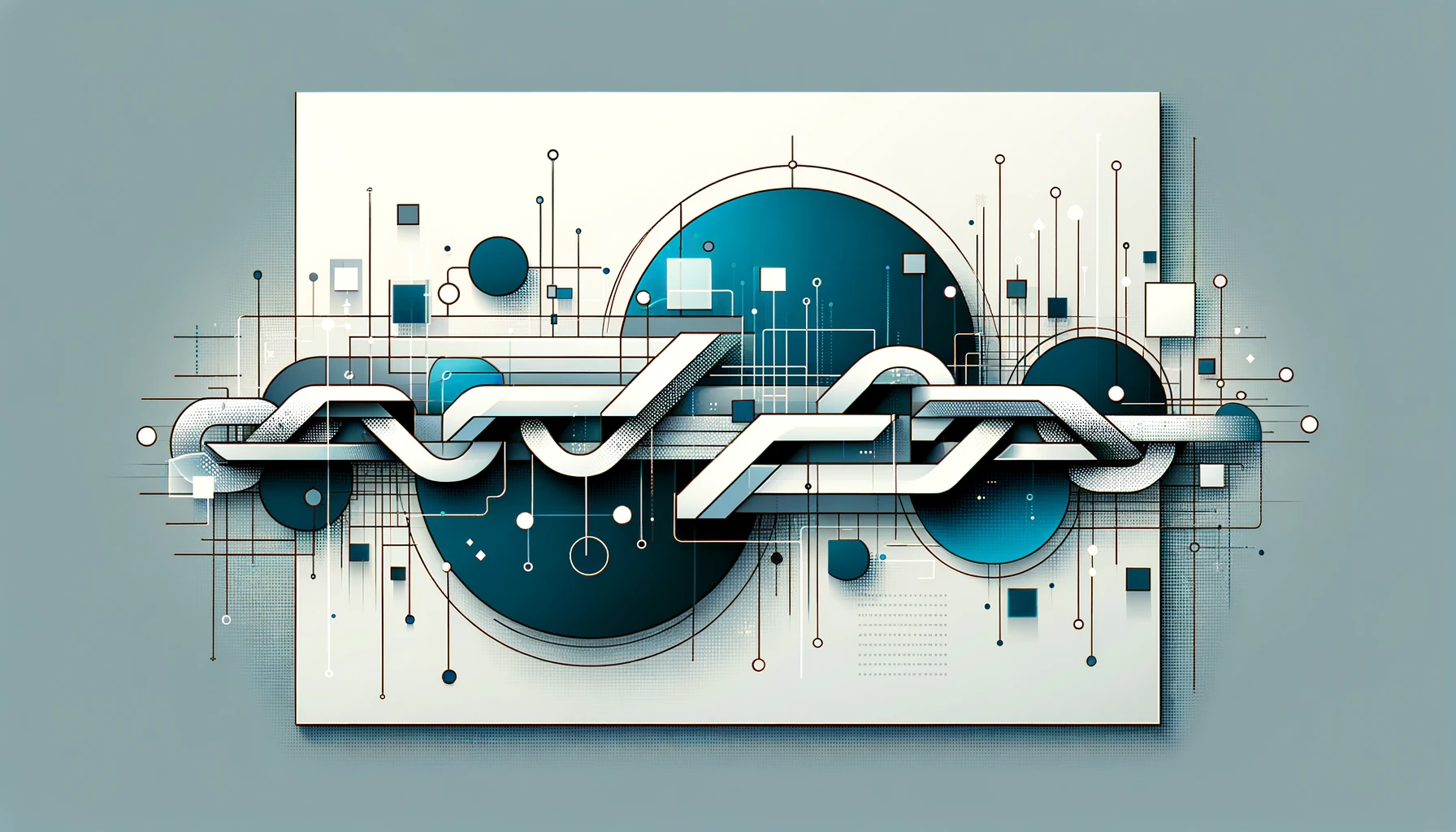The blockchain ecosystem is a vibrant and ever-evolving landscape, home to numerous platforms each promising unique benefits and innovations. In this detailed exploration, we compare five notable chains: Polkadot Parachains, Polygon CDK Rollups, OPSTACK, Avalanche Subnets, and Arbitrum. Our goal is to shed light on their distinctive features through a series of graphs and tables, providing a comprehensive view of their capabilities, performance metrics, and ecosystems.
EVM Compatibility
A critical consideration for blockchain developers is EVM compatibility, which ensures interoperability and ease of development across different ecosystems. Our analysis reveals a significant inclination towards EVM compatibility, with four out of the five chains supporting Ethereum’s Virtual Machine. This widespread adoption underscores the importance of EVM in fostering a unified and accessible blockchain environment.
| Chain | EVM Compatible |
| Polkadot Parachains | ✓ |
| Polygon CDK Rollups | ✓ |
| OPSTACK | ✓ |
| Avalanche Subnets | ✗ |
| Arbitrum | ✓ |
Performance Metrics: Speed and Scalability
In the quest for scalability, the transactions per second (TPS) a chain can handle, and its block production time are pivotal metrics. Our visual comparison illustrates that while Arbitrum leads with an impressive capability of up to 40,000 TPS. These figures highlight the technological strides being made to address the scalability challenges that have long plagued blockchain networks.
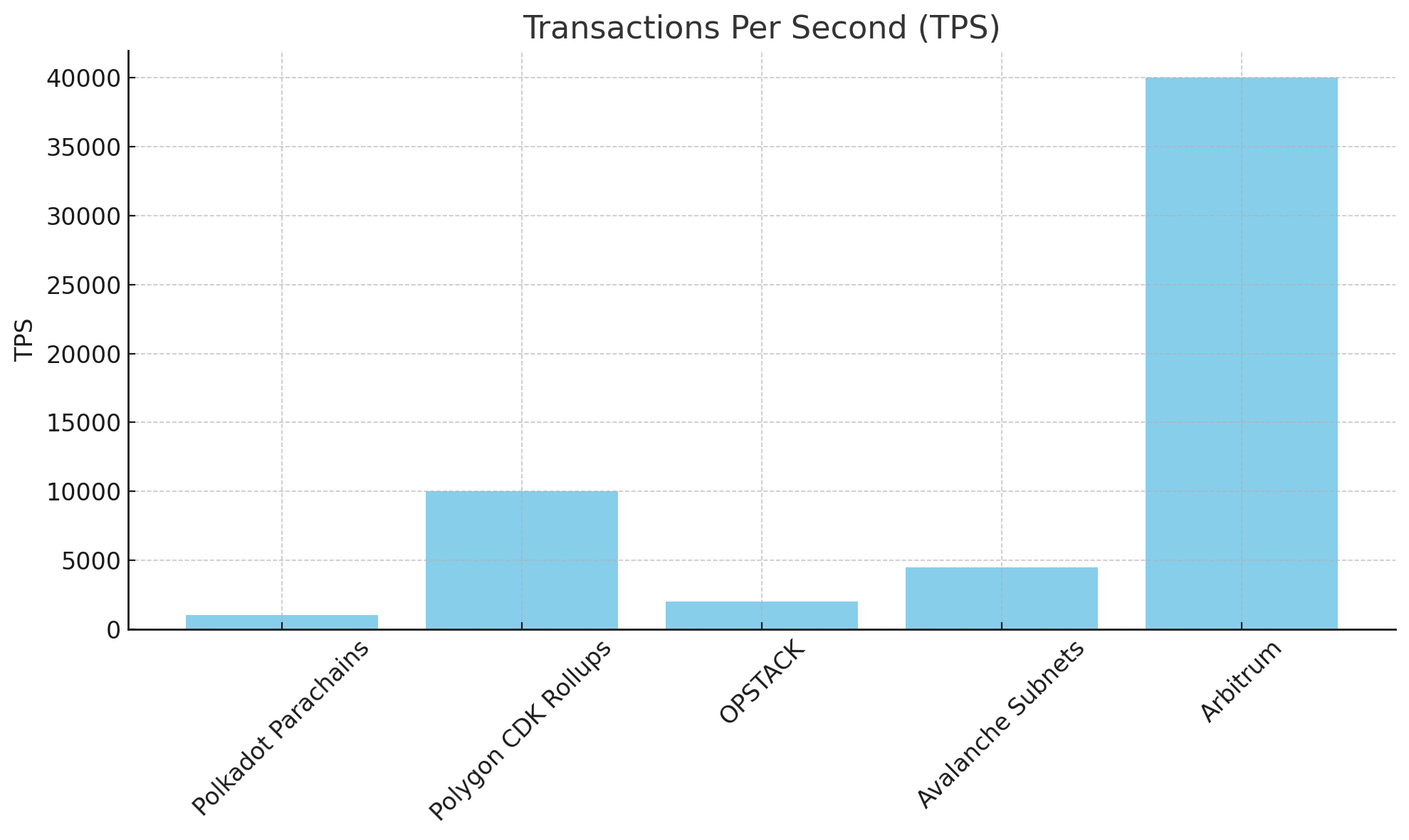
An essential factor in the performance of blockchain networks is their block production time. This metric is crucial as it directly impacts transaction processing speed and overall network responsiveness. Our analysis reveals a stark contrast in block production times across the chains. For instance, Avalanche Subnets stand out with an incredibly fast block production time of just 2 seconds, underscoring its efficiency and scalability. This efficiency is pivotal for applications requiring quick transaction confirmations, making Avalanche a preferred choice for developers prioritizing speed.
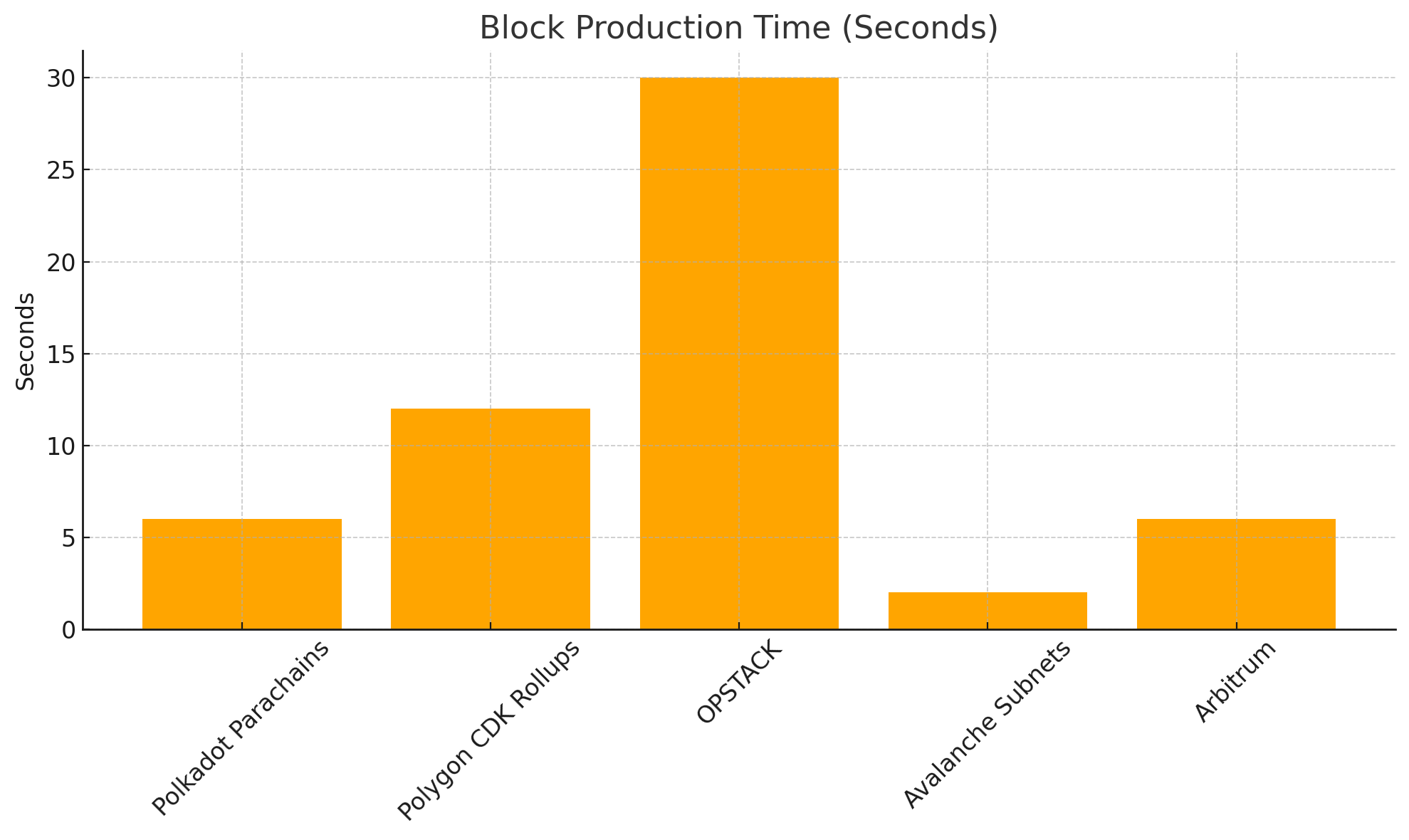
The Language support for development
Diversity in programming language support is indicative of a chain’s flexibility and its appeal to a broad developer community. From Polkadot’s support for Substrate, Rust, Move, INK, Golang to the solidity-focused environments of Polygon and Arbitrum, this variety caters to developers’ preferences and expertise, facilitating a more inclusive and innovative development landscape.
| Chain | Supported Languages |
| Polkadot Parachains | Substrate, Rust, Move, INK, Golang |
| Polygon CDK Rollups | Solidity |
| OPSTACK | Solidity, CosmWasm (Rust framework) |
| Avalanche Subnets | Solidity, Rust |
| Arbitrum | Solidity |
Exploring Infrastructure and DAPPs use cases
The infrastructure underlying each blockchain platform plays a critical role in defining its capabilities and the types of applications it can support. Our analysis delves into the intricate architectures, from Polkadot’s Relay Chain and Parachains to Avalanche’s comprehensive Mainnet and sub-chains, providing a foundation for a wide array of DApps across industries such as DeFi, gaming, and social platforms.
| Chain | Infrastructure | DAPPs Industries |
| Polkadot Parachains | Polkadot Relay Chain, Parachains | DeFi, NFTs, Gaming, Social |
| Polygon CDK Rollups | Polygon Mainnet, Polygon Edge, Polygon SDK | DeFi, NFTs, Gaming, Enterprise |
| OPSTACK | Optimism Mainnet, Optimism Babbage | DeFi, NFTs, Gaming, Social |
| Avalanche Subnets | Avalanche Mainnet, Avalanche C-Chain, … | DeFi, NFTs, Gaming, Enterprise |
| Arbitrum | Arbitrum One, Arbitrum Nova | DeFi, NFTs, Gaming |
Tools and Virtual Machines
The richness of a blockchain’s ecosystem can significantly influence its adoption and success. Through a comparative table, we examine the third-party tools and virtual machines (VM) utilized by each chain, highlighting the critical infrastructure that supports development, testing, and deployment. This ecosystem support is a testament to the robustness and developer-friendliness of these platforms.
| Chain | Third-Party Tools | VM Used |
| Polkadot Parachains | Subscan, Polkassembly | Substrate |
| Polygon CDK Rollups | PolygonScan, MATIC Network Explorer | EVM |
| OPSTACK | Optimism Explorer, Optimism Scan | EVM |
| Avalanche Subnets | AVAXScan, Avalanche Explorer | Avalanche Virtual Machine (AVM) |
| Arbitrum | Arbitrum Explorer, Arbiscan | EVM |
Time to Finality
Finality in blockchain terminology refers to the point at which a transaction can no longer be altered or reversed. Time to finality is, therefore, a critical measure of a blockchain’s reliability and security. Chains like Polkadot Parachains offer a time to finality of 1-2 minutes, balancing security and speed. In contrast, chains employing Optimistic Rollup technology, such as OPSTACK and Arbitrum, exhibit longer times to finality, typically ranging from 5 to 20 minutes. This extended time is a trade-off for their scalability solutions, highlighting the diverse approaches to achieving consensus and ensuring transaction permanence across different blockchain architectures.
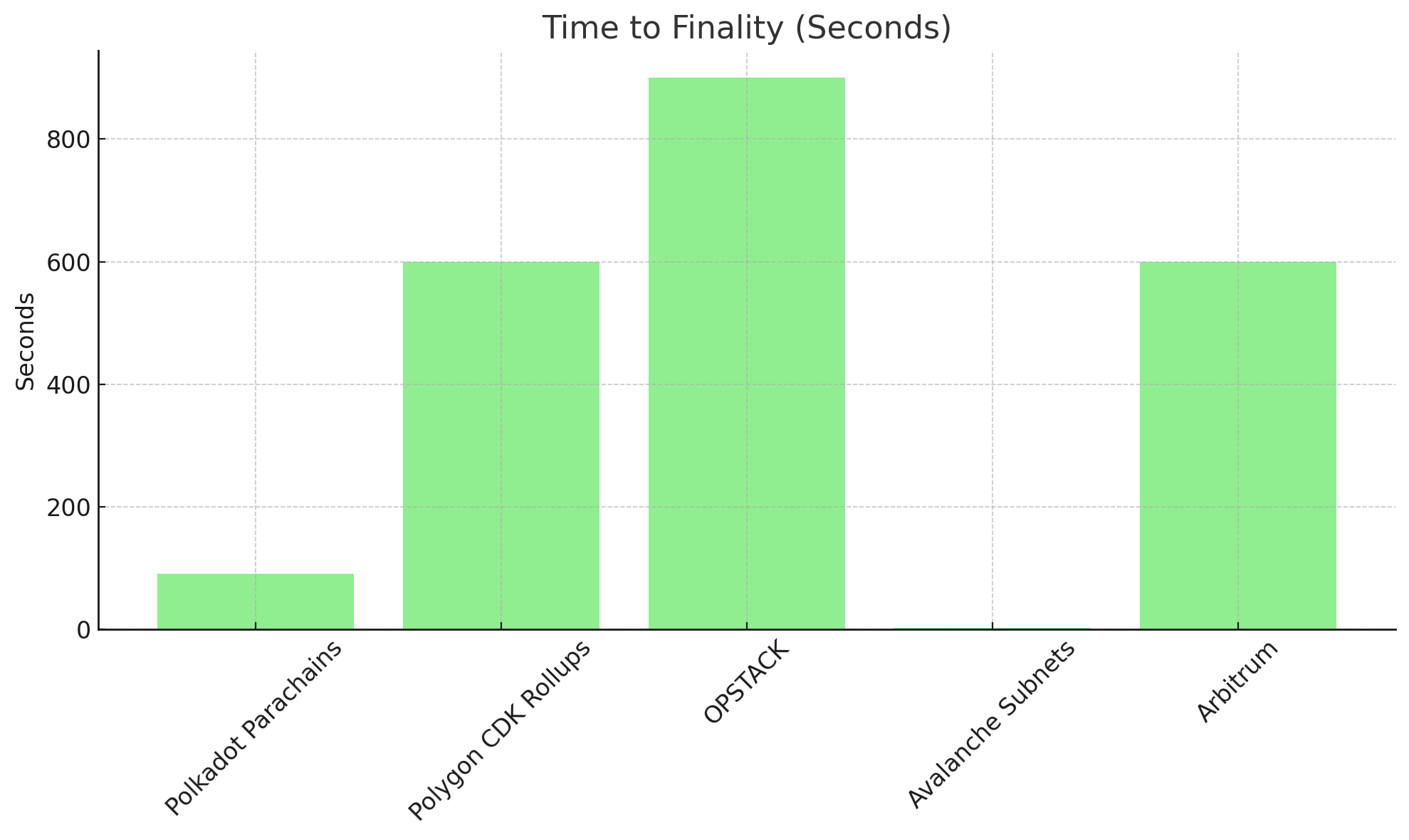
Project Launches
The number of projects launched on a blockchain is a robust indicator of its ecosystem’s vitality and attractiveness. Polygon CDK Rollups, with over 3,000 projects, stands as a testament to its dynamic ecosystem and developer-friendly environment. This high project count not only reflects the trust and commitment of developers but also indicates a rich and diverse application landscape for end-users. Comparing the project counts across chains offers insights into where developers are flocking and where users can expect a broad array of applications and services.
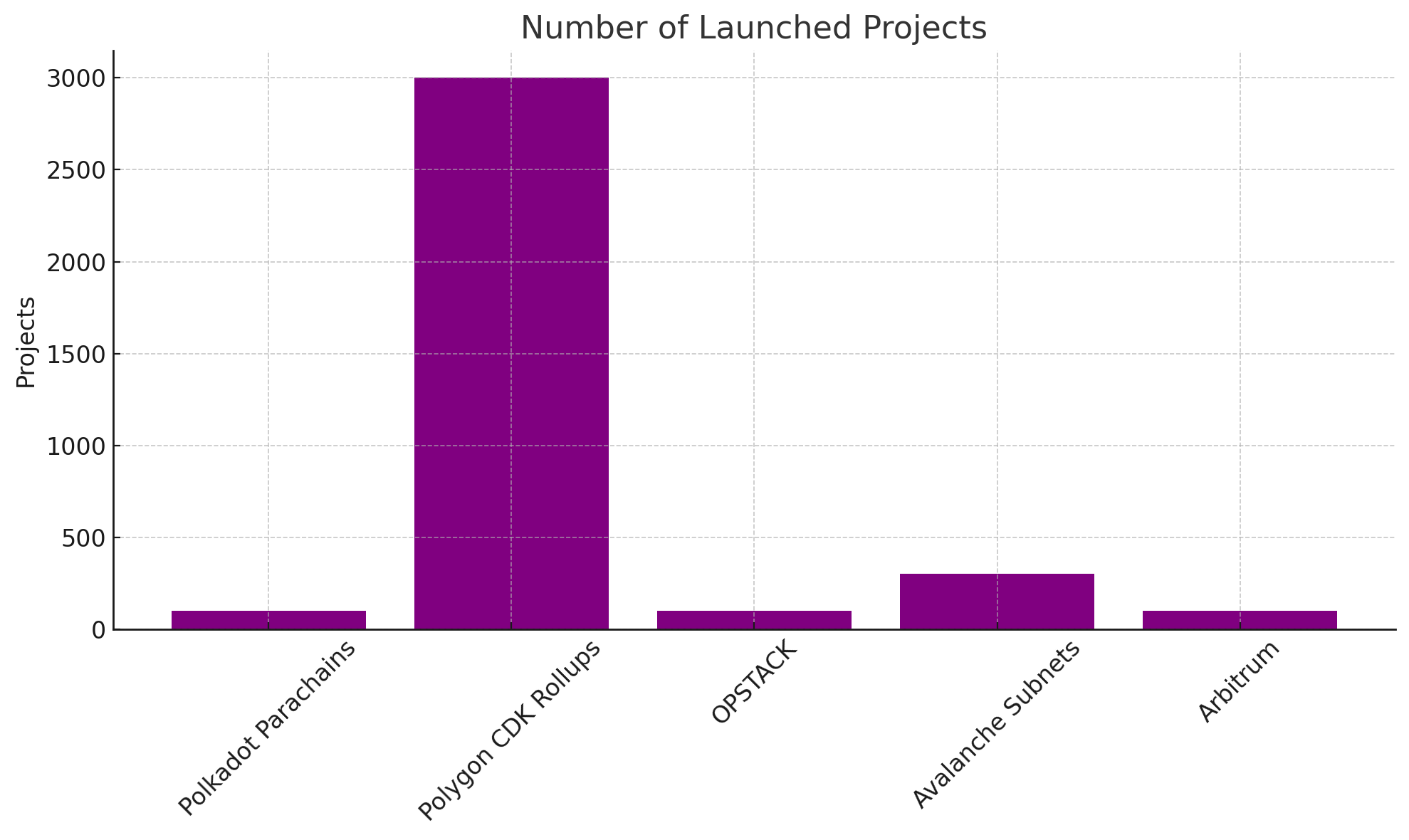
Network Activity Insights
Average daily active addresses are a vital statistic for understanding the actual usage and engagement on a blockchain network. High numbers indicate a vibrant network with substantial user interaction, which can be seen in chains like Polygon CDK Rollups, boasting 300,000+ daily active addresses. This engagement level not only signifies a thriving ecosystem but also underpins the network’s value proposition to both developers and users. By comparing daily active addresses across chains, we gain a clear picture of where the blockchain activity is most concentrated, shedding light on user preferences and the practical adoption of blockchain technology.
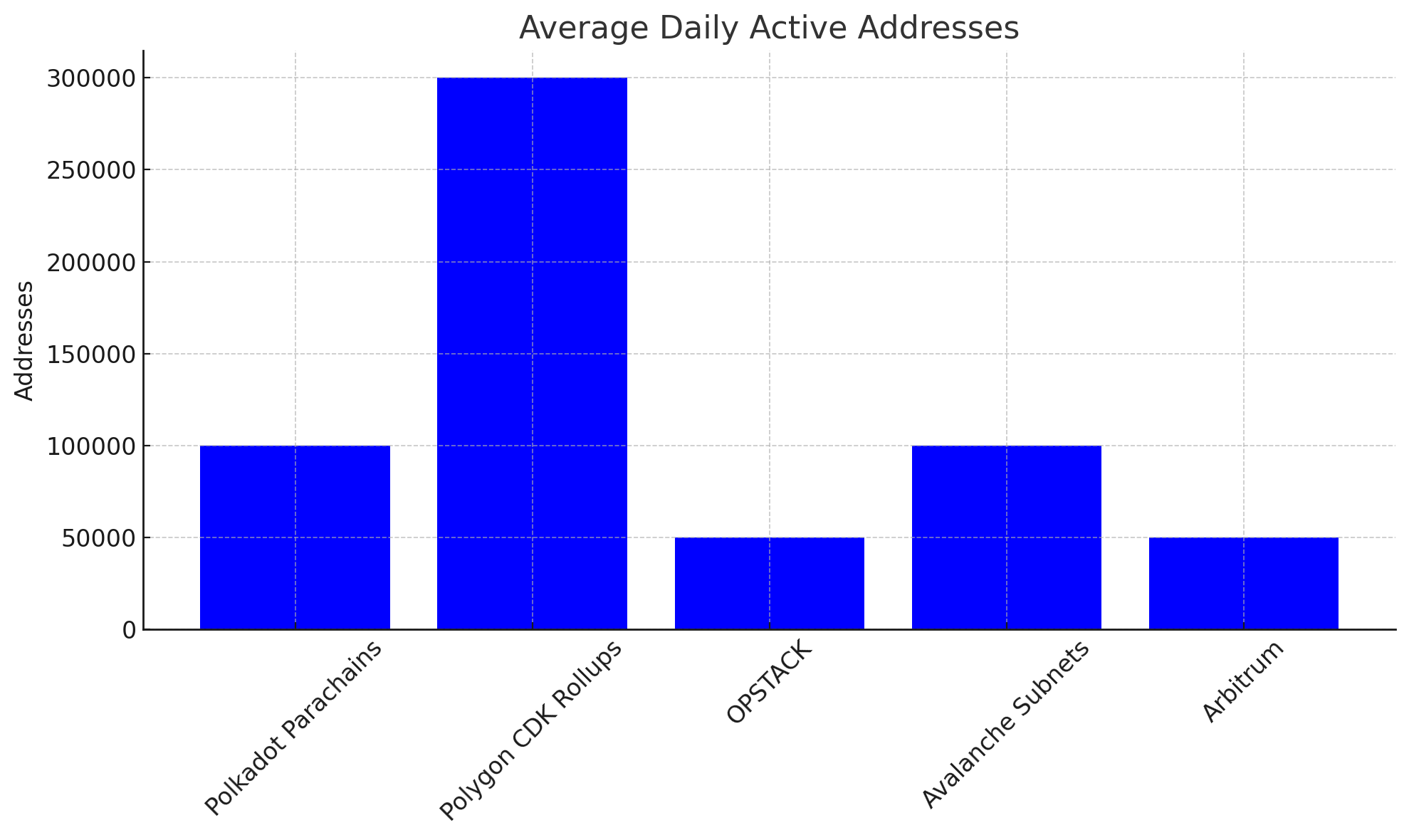
A Closer Look at Key Metrics
To complement our analysis, we dive deeper into additional metrics such as the number of developers, validators, and the total value locked (TVL) across these chains
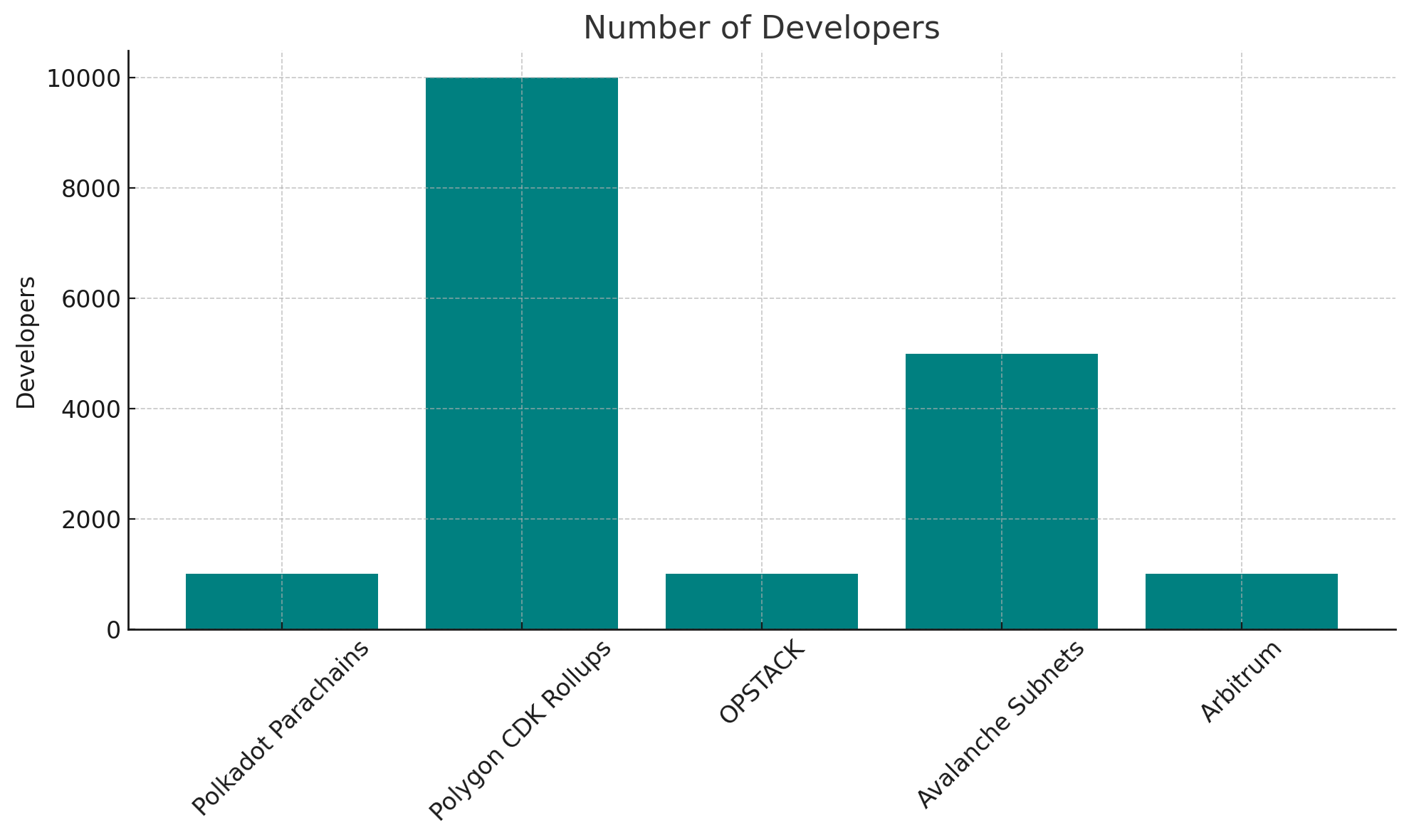
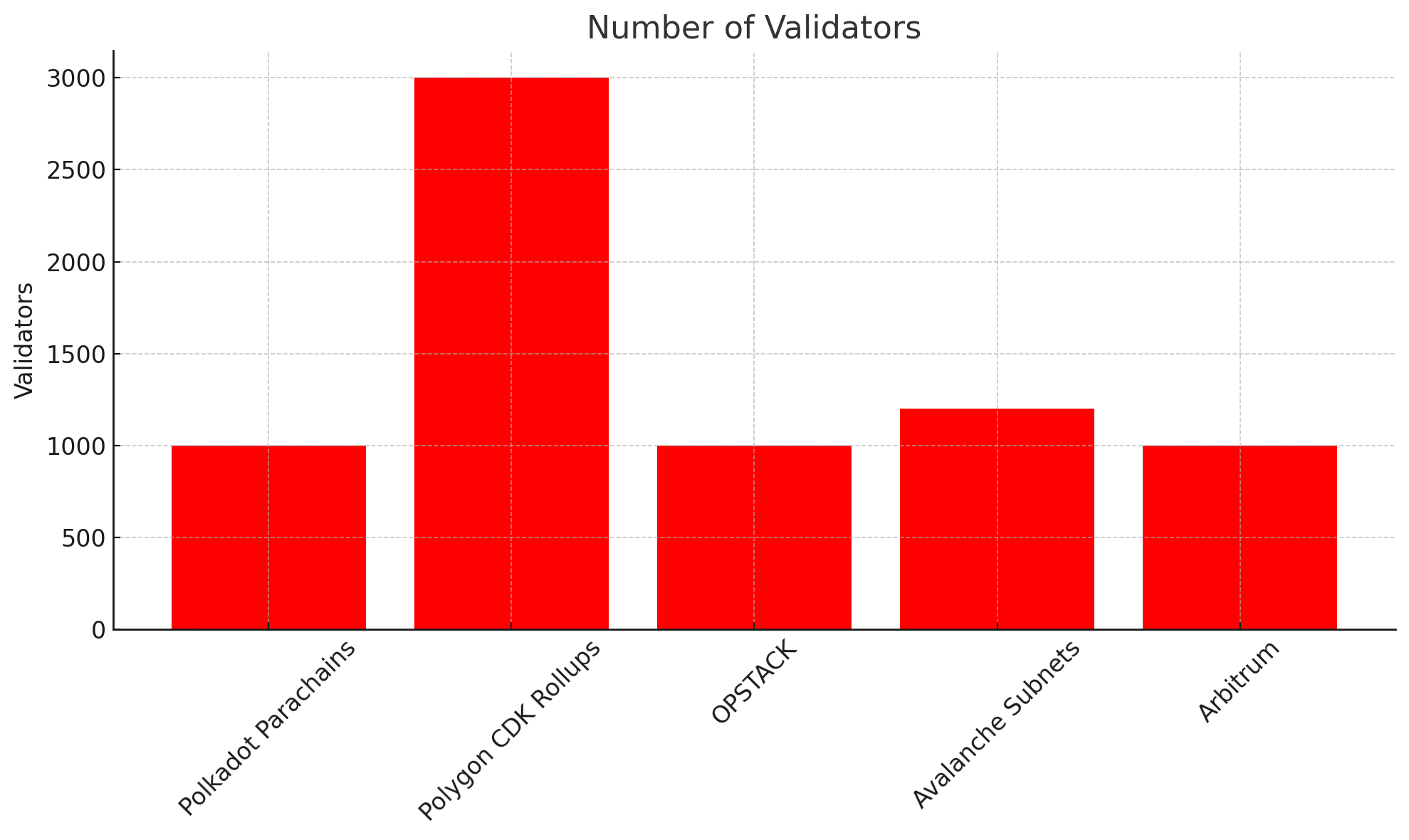
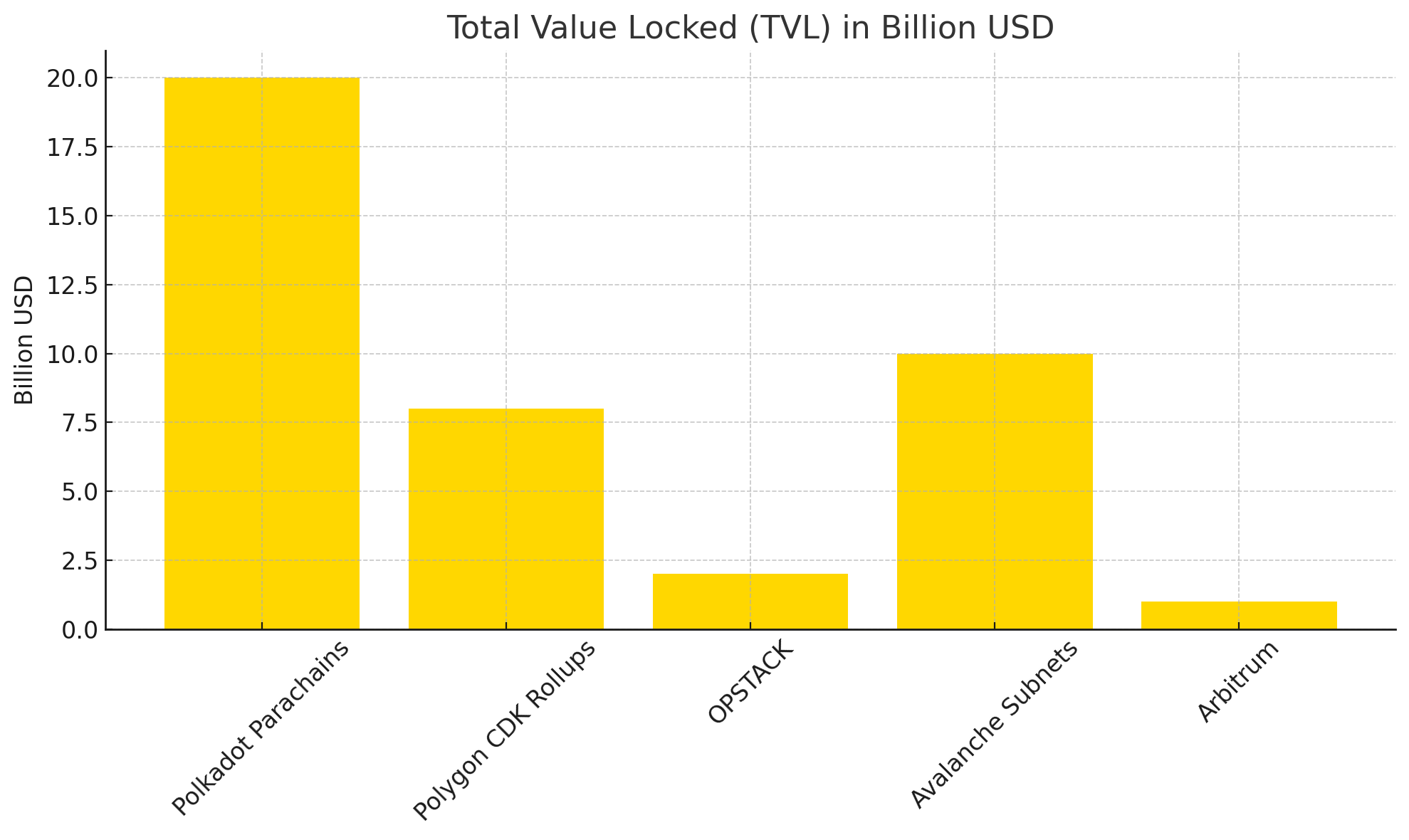
These metrics offer insights into the community and financial health of each chain, illustrating the vibrant and dynamic nature of the blockchain ecosystem. The significant number of developers and validators on platforms like Polygon CDK Rollups and the substantial TVL in chains such as Polkadot Parachains and Avalanche Subnets reflect the confidence and investment of the community in these technologies.
Conclusion
The blockchain world is rich with diversity, each chain carving out its niche through unique features, capabilities, and community support. From the impressive throughput of Arbitrum to the rapid block production of Avalanche Subnets and the wide language support of Polkadot Parachains, the options for developers and users are more varied and powerful than ever. As we continue to witness the evolution of these platforms, staying informed and understanding the nuances of each will be crucial for anyone looking to navigate the future of blockchain technology successfully.
